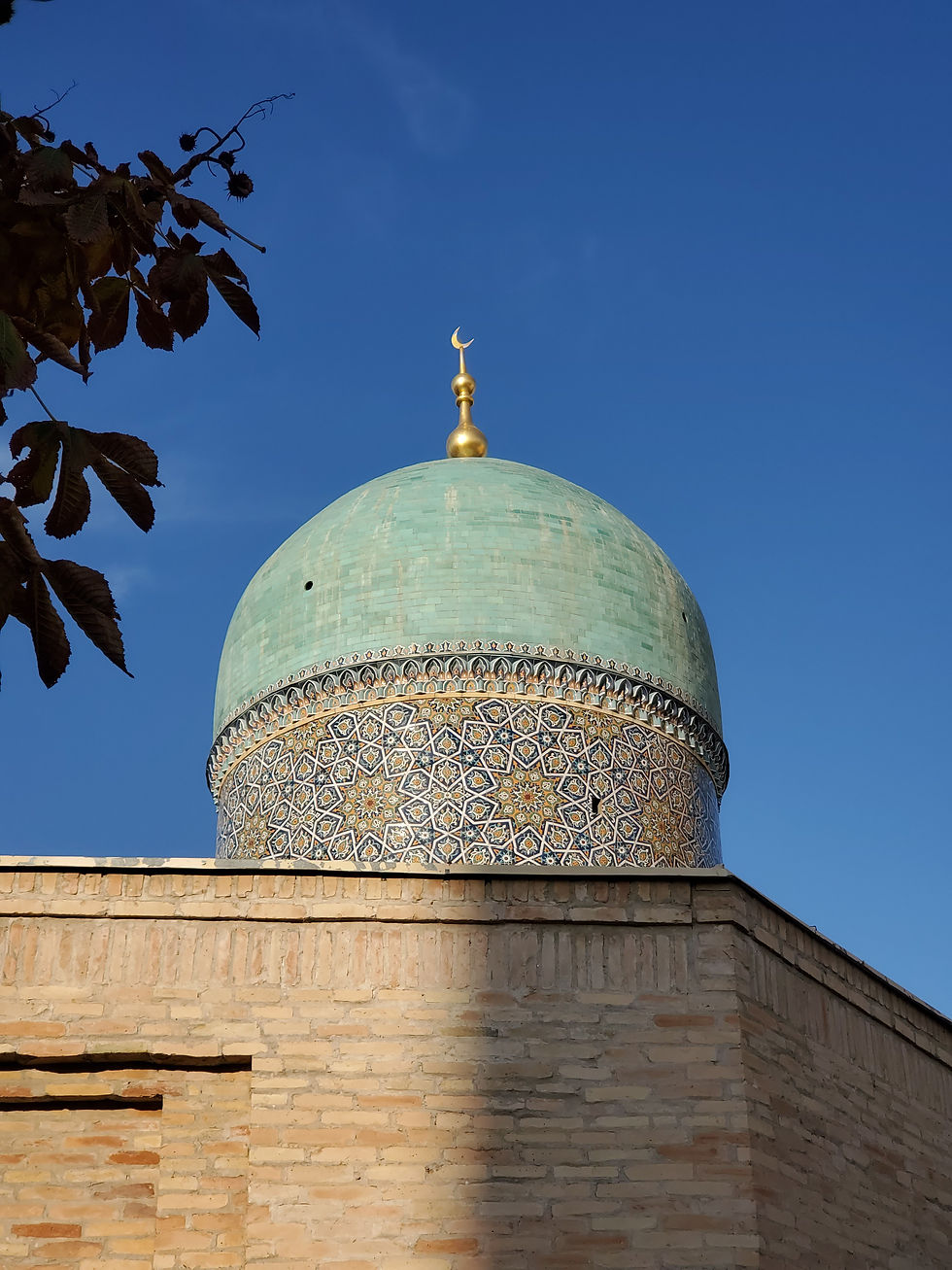CULINARY GUIDE TO UZBEKISTAN: A WORLD OF FLAVOURS
- ieattravelwrite
- Aug 12, 2023
- 3 min read
Nothing compares to going to a country where you can eat everything because it's halal. In Uzbekistan, the cuisine is rich in flavors. Uzbek food contains a lot of meat-heavy dishes but also includes dried fruits, fresh vegetables, and nuts.
In the traditional home I have visited, on the table, I always found a spread of dried fruits, nuts, candies, fresh fruits, and of course, bread. Tea is also an important part of the culture. No meal is complete without a cup of green tea. There are also some similarities between cuisines in other regions of the world.

The national dish of Uzbekistan is plov. In other parts of the world, this is also known as "pilaf". Across different parts of Uzbekistan, you will find different variations of this dish. Mainly, it consists of meat, rice, carrots, seasonings, and oil.
It is easy to find plov everywhere, but there is also a plov center in Tashkent. In Samarkand, we visited a restaurant called Osh Markazi, where the plov is served on a communal platter. We also got to go behind the scenes to see how it's made! It was one of my favorite culinary experiences on this trip. I tried plov with horsemeat as well (pictured in the middle). While I was hesitant to try it at first, knowing that it's horsemeat, it was actually pretty good!

Somsa, or what is known as "samosa" in other parts of the world, is one of the most popular items in Uzbek cuisine. It is different from the samosa that you may know.
It is made from a flaky pastry and baked in the oven. It is often filled with meat, pumpkin, or butternut squash. It is a staple item for breakfast, but you can also have it at other times of the day. It is also popular as a street food snack.

One of my favorite foods in Uzbek cuisine is the manti! Inside the steamed dough, you can find a meat filling. Sometimes, they also serve it in a soup-like dish, called chuchvara, except the dumpling is similar to manti, just smaller in size, and includes vegetables in the soup, along with meat.
The dough is very soft and the filling is always juicy. Other ingredients, along with beef, include onions, salt, and pepper.
What makes Uzbek cuisine so flavorful and rich is the amount of spices used. Often, dishes include spices such as bay leaves, cayenne, cumin, sesame seeds, garlic, mint, basil, thyme, dill, and parsley, among many more.
Other dishes you can find in Uzbek cuisine include; shurpa (Uzbek soup most often made with lamb and vegetables, served with bread), kazi (horsemeat), lagman (pulled noodle dish), obi non (one of the most important staples), shashlik (kebab) and more.
We were very lucky to be able to experience authentic Uzbek cuisine both at my friend's house and in Samarkand, where we went to Mubarak-Opa Guesthouse for the dining experience. It was an opportunity I came across online and knew I had to try, especially knowing that each region has some variety in cooking style. Additionally, the guesthouse had grapes hanging, and trees of many other fruits, which were also served at the table. The family is extremely friendly and the portion was very generous. We were the only ones there, which made the experience even better!

When eating out, my favorite restaurant was Shohona, as I found the food to be very delicious and cooked fresh. There were also a lot of items to choose from on the menu, giving you a chance to sample lots of the different Uzbek dishes. Shohana also has a beautiful setting, with a fountain at the front and a comfortable seating arrangement inside.

Lastly, one of the places I came across (and would see pretty much everywhere) when in Uzbekistan was Safia. It is a bakery and cafe that started back in 2001.
It is a nice place to work, relax or just sit for a cup of tea and some dessert.
My time in Uzbekistan was one that I enjoyed a lot. I did find it a little hard to find International cuisines, but quite enjoyed the traditional Uzbek dishes during my stay.
Which of these dishes would you love to try the most?




















Comments